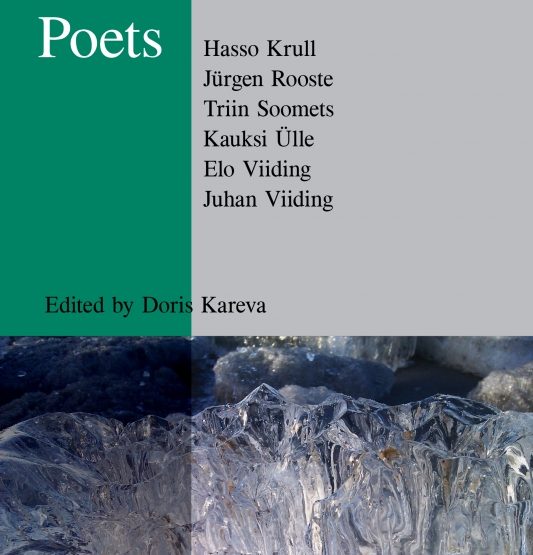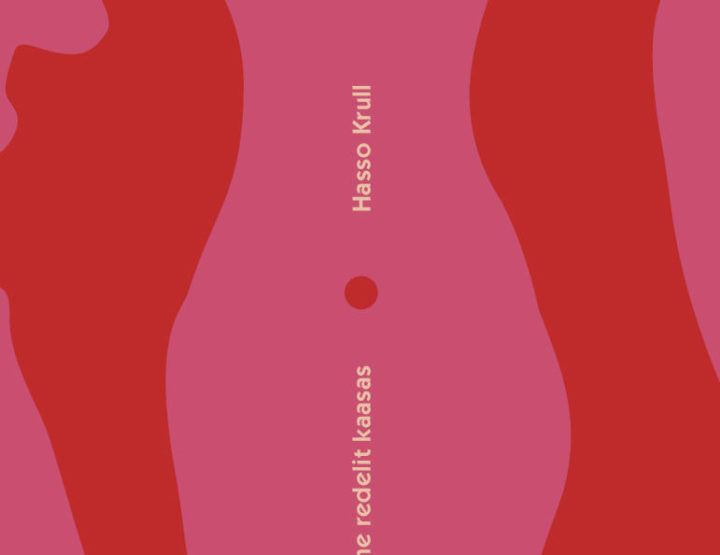Clouds have meaning. The meaning is indistinct and floating, but is simultaneously constant and incessantly turning back. We cannot imagine life without clouds, nor can we imagine clouds not meaning anything. When the sky is cloudy, it might rain; when the clouds are dark and dense, it’s oppressive; when there’s not a cloud in the sky, we say there’s “nice weather out”, but the weather can also be nice when lone white clouds are drifting slowly across the sky. Clouds can be blood red, yolk yellow, silver gray, or ochery; they amplify the light of sunset and morning dawn; they streak, spread, and disperse.
Clouds hold a special place in classic Chinese hermit poetry. Tao Yuanming would observe the slowly-passing clouds; in Wang Wei’s poems, they refer to Buddhism and monks reading the sutras; Hanshan, on the other hand, dances with white clouds or uses them as a pillow. Clouds are associated with mountains and the benefits and simplicity of hermetic life, and are contrasted with the city, royal court life, bureaucracy, and all the “world’s dust”. Down below in the world of man, clouds are watched with a sense of yearning because they are so close to the heavens. Above, in the mountains, clouds become a symbol of peace of mind. Thus, clouds lie in the heights, but are not entirely inaccessible. In fact, it is possible to reach the clouds and even come into direct contact with them. This can be done physically, through the strain of climbing, but can also be done while sitting in place by way of mental exercises – and, of course, one can reach the clouds with the help of wine and poetry. It seems that poetry is, in a certain sense, a cloud.
Clouds are eponymous in Aare Pilv’s poetry, to a certain degree.[1] This became clear as early as his book Tema nimi on kohus (His Name is Duty, 1999), where watching the clouds is a theme in and of itself, and is unquestionably tied to self-reflection:
“Hot days. In the evenings, I lie on my back, staring up and trying to perceive the distance between myself and the clouds. Sometimes it works, but sometimes the image of the clouds flattens into a picture on my retina that has no spatiality. I attempt to overcome the levelling; to brush the fabric of height and distance with my senses.”[2] (T, 17)
Observing the clouds provides a key to spatial perception: if even the clouds are spatial, then everything that lies between Pilv and the clouds is also spatial; flattening is no longer possible. At the same time, observing clouds also tunes Pilv in, to capture nuances, undertones, and transitions:
“In the evenings, I lie on my back, staring up and trying to give names to the colors of the sky. Sometimes it works, but sometimes the transitions between tones cannot be notated…” (T, 18)
The narrator reckons he wouldn’t bother to stare at a picture or a photograph for as long, because he would start searching for meaning. When staring at actual clouds, however, he can “abandon that presumption of meaning”. This of course doesn’t apply to poetry, because the clouds immediately acquire strong meaning. Still, it is a contemplative, even meditative meaning, because clouds are watched to liberate oneself from excessive meaning. Thus, clouds become the base and a condition for a certain ascetic aestheticism.
This ascetic aestheticism deepens in the author’s following books. Pilv doesn’t only watch the clouds, of course, he watches many things. However, cloud-watching remains the model that allows him to “abandon the presumption of meaning” and watch simply for the sake of watching, as if doing so from the opposite end of the world. This type of watching requires certain ocular techniques that Pilv also strives to define: “By ocular techniques, I mean the way the eyes become ‘conscious’ of their viewing and seeing abilities by way of viewing and seeing.” (NT, 12) To reword this as simply as possible: it is a meditative manner of identification where things are not viewed externally, but from within, going along with their idiosyncratic time. In contemporary philosophical terms, this posture can also be called object-oriented ontology, because the person is transported to the same level as objects. He is simply one thing among many. Timothy Morton has written of what he calls “ecognosis” – an ecological manner of perception in which being and seeing are perpetually tied without ever actually intersecting:
“Ecognosis implies that being and appearing are intertwined because ecognosis bends around on itself. Ecognosis is a self-knowing awareness that doesn’t imply an infinite regress of metaness, but a strange loop instead.”[3]
The first unique quality of Pilv’s poetry can now be derived; he has turned seeing into a method, more than anyone else in contemporary Estonian poetry. One could say Pilv not only watches watching, but sees seeing. The seeing of seeing is a self-reflective loop that reveals non-human “being” within the seer himself. We can now create a whole range of other self-reflecting loops based on the same pattern: the thinking of thinking, the feeling of feeling, the perception of perception, and the remembering of remembering. Pilv has indeed done all this, achieving a rare proximity to things and beings that are not himself – all the way up to the distant clouds.
A second unique quality of Pilv’s poetry stems from his relationship to language. It already began taking shape in his second poetry collection Sun i.e. Sun (1998), which is packed with a variety of linguistic experiments. The work is simultaneously Pilv’s most multi-stylistic to date: he tries out poetic possibilities with obvious glee, though he does not occupy himself with them as intensely in later collections. The book is intertextually lush. Its style sprouts and flourishes like weeds in an overgrown garden; a single phrase can be reproduced in a dozen different versions.
This type of approach to language also requires a rethinking of poetic form. Pilv has done so, and, as a result, focuses on prose poetry as his most contradictory and high-opportunity genre-based experiment. It seems no one has worked as much on Estonian prose poetry over the last twenty-five years as Pilv, although other authors may surpass him in terms of volume (i.e. Jan Kaus and Jüri Kolk). Pilv plugs away on the border between prose and poetry with Baudelaire-like intensity as if he intends to one day finally determine what it is that makes poetry poetic. Here, he must of course employ dreamlike elements, childhood memories, fragmentation, and unexpected twists. One of his most outstanding pieces is “The Assumption of Mary in the Capital”. In the piece he describes certain events in Tallinn in meticulous detail till the final line, which gives the entire preceding poem an entirely different meaning: “whether I stayed in the capital or took the next bus home, I don’t even know, because that’s when I woke up.” (NE, 17) The ordinary day turned out to be a dream, but it is similarly a variation on the well-known topos “everything’s all a dream”. Similar “resolutions” appear in his description of a Viljandi museum that he claims is actually a telephone call (K, 20–21). As well as in the biography of a relative named Selma from deep in the countryside, which is liberated of excessive meaning by her own favorite saying, “That’s the way life is.” (K, 17) One has the sense of the fabric being unraveled as soon as it has been woven. This unravelling can also be visualized as a stage production – like in the miniature play Coffee Cup, where an actor spills a coffee cup, then walks to the edge of the stage and recites the description of the performance word for word, asking in conclusion: “If this were the sole event in a person’s life – holding an unlidded cup of coffee too tightly with the intention of reaching the edge of the stage – then what would you think of it?” (K, 50) After that, an “open discussion” takes place with the audience, which is nothing other than “open unravelling”.
It is here that a certain conceptualism slowly hatches – the third quality characterizing Pilv’s poetry. First, watching is turned into a method that becomes seeing seeing; then, he begins experimenting with language, plugging away on the border between poetry and prose while trying out various styles, forms of wordplay, and intertextual transformations; and finally, he applies the seeing method on the language itself, watching the linguistic massifs like the passing of clouds.
In my opinion, Pilv’s conceptualism achieves perfection in his latest book When the Rain Ends (2017). The author did his own book design, presenting the text so geometrically that every line becomes part of a great black-and-white row of clouds. This means the book can also be simply viewed, gazing at the poems like passing clouds while occasionally pausing to read one attentively. The composition is not linear and under no circumstances must one read the pieces from the first page to the last in progression, but the poems all support one another and the style seems to become increasingly material and tactile. It seems this is a book that Pilv has wanted to make for a long time, and finally has. Of course, clouds also rise in When the Rain Ends, but surprisingly, they are now seen in a forest through the trees:
“my mind throbs and beats and shimmers
when it looks behind my eye
at those incidental clouds in the woods between trees,
[…] my nature ponders, standing before clouds,
incredulously, naturedly, inevitably […].”
(K, 76)
The mind peers at clouds behind the eye, but his nature stands directly before them. There’s no doubt that here, Pilv is attempting to present his whole seeing technique in a concentrated form; his whole language-seeing and seeing-language. This type of posture resembles, in fact, ancient Chinese hermit poetry; Hanshan’s dance with the white clouds. To use the hermit typology of the Han Dynasty era, Pilv himself would be a shi-yin: a city hermit who lives among others but still respects the values and principles of true hermits.[4] Peering from behind the eye is the meel, the mind, which the Estonian dictionary defines as “the reception of certain types of senses and the ability to differentiate” and has a Chinese-like feel to it. Yet the loom, nature, which stands before the clouds and ponders “incredulously, naturedly, inevitably, gladly, and earnestly” is already more complex and harder to define. In old Estonian, the word meant “a created being”, but does not necessarily require an external creator (as the Latin creatura would presume). The loom is simultaneously natural and animalistic; it is a force that sets the meel in motion and gives it substance. Without the loom (nature), the meel (mind) would merely be an abstract function. However, both are intrigued by the “cloudy serendipity” where being and emergence are intertwined. This “cloudy serendipity” is a non-human component within thought and perception. One’s nature is a pure force, but pure force is also a cloud. Thus, nature is a kind of inner cloud, a “cloudy serendipity” within the viewer himself. And in truth, the mind is a part of that nature; a certain aspect of it that enables one to observe nature and cloud simultaneously without their force ever being exhausted. Nature and cloud are greater and mightier than the mind.
All this gives rise to an irresistible feeling that Pilv is expressing a particular mystery here. To do so, he indeed had to create his “own style” with which he could be as precise as possible. This mystery has nothing to do with the otherworld in the ordinary sense of the word. Pilv rather tends to avoid supernatural contacts. Why this is the case becomes clear in a very early prose poem, in which he describes a chilling childhood experience:
“One of my childhood fears was a painting that stared back at me. I dreaded it by day, and it was a reproduction of the Mona Lisa that hung above Mother’s desk in our old apartment. […] The worst part wasn’t looking directly at it, but that when I did, it appeared as if she was moving her lips – very unnoticeably. I was about as afraid of it as one fears snapping monsters beneath the bed or the corners of a dark room. I couldn’t bear the thought that someone from that other world was connecting to this one. (P, 12)”
A force that belongs to an entirely different time and place might arrive from the other side but still strive to say something, moving its lips “very unnoticeably”. The word pair is in fact a pleonasm, because if something is already unnoticeable, one won’t notice it anyway – so, how can it additionally be “very unnoticeable”? Mona Lisa doesn’t actually move her lips, not noticeably or unnoticeably – what makes the lips move is the gaze of the painting’s watcher. The lips’ movement isn’t seen, but rather the lips are moved by watching itself. However, this type of tendency is dangerous, because now, the seeing itself is not seen. Instead, one sees the vision caused by seeing alone: a visual hallucination. The supernatural otherworldliness may kill the mystery that Pilv yearns to capture in this world. That is precisely why Pilv desires the dual-meaning Nägemist (See You) in the title of his most agenda-based book. Although the initial sense would be seeing someone again, the second and more important sense is seeing’s seeing, which is emphasized once more on the final page: “when you close the book / then / open eyes”. (NT, 88) One only truly learns to see when they don’t watch a picture, but rather the clouds. Then, the viewer’s mind gradually appears and, finally, the nature residing behind it. That is precisely Pilv’s ecognostic mystery: one nature, one mind, one cloud.
[1] The Estonian word pilv (also the last name of the author in focus) translates to “cloud” in English.
[2] Henceforth, I cite Pilv’s books with a system of abbreviations: P – Päike ehk päike (Sun i.e. Sun). Tartu: Erakkond, 1998; T – Tema nimi on kohus (His Name is Duty). Tartu: Erakkond, 1999; NT – Nägemist (See You). Tallinn: Tuum, 2002; NE – Näoline (Visaged). Tallinn: Tuum, 2007; R – Ramadaan (Ramadan). Tallinn: Tuum, 2010; K – Kui vihm saab läbi (When the Rain Ends). Tallinn: Tuum, 2017.
[3] Timothy Morton, Dark Ecology: For a Logic of Future Coexistence. New York: Columbia University Press, 2016, p 98.
[4] See Pertti Seppälä, “Saatteeksi” in: Wang Wei, Vuorten sini, pp 8–9
Hasso Krull (b.1964) is an author of a dozen poetry books and five volumes of essays. He has written extensively about poetry, mythology and various other subjects, including philosophy and politics, and translated poetry and theoretical works from French, English, Finnish etc. In 2001 he co-founded a web magazine Ninniku that has published poetry translations from more than forty languages.




